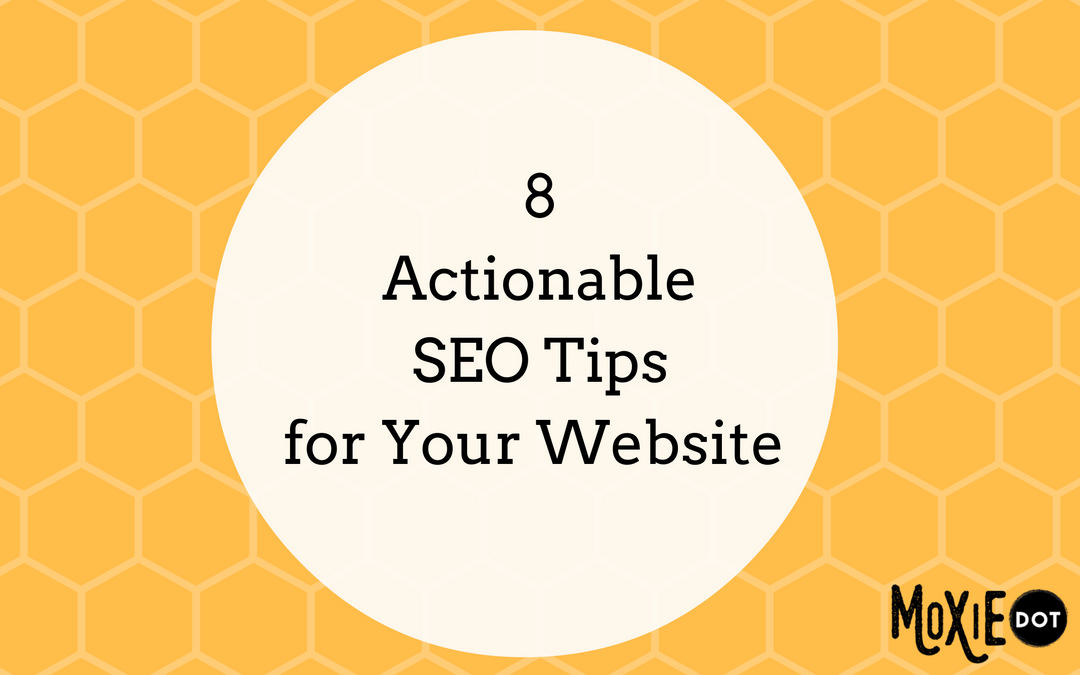Search engine algorithm changes are being rolled out consistently. For Google alone, they implemented 10 algorithmic updates this year, so far. It can definitely get confusing if you are not up-to-date with all these changes, and especially if you are not knowledgeable with the technical aspect of these algorithmic changes and how it can affect your website visibility.
Are you unsure about which SEO practices to stick with and which ones to ignore?
No need to worry. The truth is, most basic SEO principles still remain.
Here are 8 actionable SEO tips for your website that still matter:
1. Conduct a thorough keyword research
Work smarter, not harder. Don’t start creating content without doing keyword research. Keyword research will give you a pulse of what your target audience is looking for. So, it is important to have the right keywords before going full blast with your content creation.
Why do you need to do keyword research?
- To get the right kind of traffic
- To get the right kind of traffic to convert
Here are a few SEO tools you can use (MoxieDot has no affiliation with these tools):
2. Don’t create content just for search engines
Now that you have the right keywords to use, don’t forget to write not just for search engines but for your readers as well. Be familiar with SEO copywriting.
Use keywords sparingly. Don’t overdo it.
Create content that:
- is irresistible
- helps your prospective and existing readers
- uses your reader’s language to connect to them
- is visually stimulating
3. Don’t forget about your links
In SEO, it is best practice to have these 3 links set up the right way consistently: internal link, external links (that you have control over), and permalink.
Internal links are links to other related pages, files, and posts on your site. External links are hyperlinks to point to other websites. Doing this right is important for both SEO and user experience.
Permalink is the static hyperlink to your blog post or web page. This can help cut down on 404 and broken link errors, if you use the right URL consistently. Use a URL with text that makes sense and also include your keywords.
4. Optimize your images
Name your image files using your keywords. Use keywords in the alt-text for images, description, and caption as well. (Although alt-text is arguably most important.)
Image file size is important too. Don’t use large files that will affect your page load time. Page speed isn’t a guaranteed ranking factor yet, but many SEOs think it actually is or will be.
Use attribution when required. This isn’t exactly optimizing, but just a best practice for web content.
5. Decrease page load time
The easiest way to check what your page load time is by using Google’s Page Speed Tools. Once you’ve determined the sources that contribute to the increase in your page load time, fix them.
Here are some quick tips to keep in mind:
- compress your files
- use plug-ins that will cache your pages
- don’t use too many redirects
- optimize your images
6. Be more searchable with the right metadata
Yes. Metadata is still important to SEO.
Why? Because it can increase click through rates from organic search. Metadata is the short description you add to summarize what your web page is about.
Of course, use your keywords in your metadata without over-optimizing.
7. Share your content
Don’t just create awesome content and wish that it will be discovered by your target audience.
Share your content through syndication to authority sites like Linkedin Pulse and Medium.
Blast them off to your social media accounts – Twitter, Linkedin, Facebook, Pinterest, etc. Google has said social media isn’t a ranking factor, but some studies (like Stone Temple’s) have shown that there is some correlation between who is sharing your content and rank/traffic.
8. Set up analytics
Last but not the least, you need to track your website’s SEO performance.
You can use Google Analytics (free) for this. Some important data that you’ll get using this tool are:
- Visitor demographics such as location, gender, age and interests
- Visitor sources – organic search or referral
- What keywords were used by visitors in search engines to get to your site
You need to know what is working and what is not. This way, you can re-align your goals and maximize your progress.
SEO doesn’t need to be complicated. With these actionable tips and an eye for best practices, you cannot go wrong in optimizing your website with the basics.
*Featured image made in Canva.

